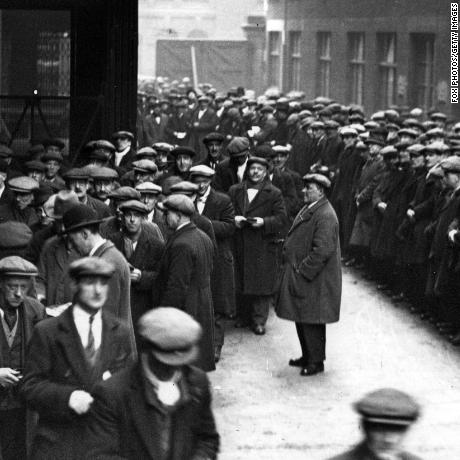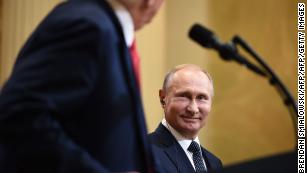Are we sliding back to the chaos of the 1930s?
(CNN)US President Donald Trump swept through Europe like a hurricane. He asked why his country was obliged to defend its allies, carped about "unfair" trade practices, blasted the UK and Germany as weak on migration and suggested President Vladimir Putin was as credible as America's own intelligence agencies when it came to Russian hacking.
Trump reprised his role as a cheerleader for Brexit and complained that everyone was taking advantage of the US. Negotiating with Putin would be easier than dealing with allies, he said. It was all transactional, about price tags and deals. Values found little airtime.
At almost every step, in tweet after tweet, he sneered at the liberal western order built from the ashes of World War II, underwritten through institutions like NATO and the UN and protected under the US nuclear umbrella, an order that has given much of the world unrivaled peace and prosperity.
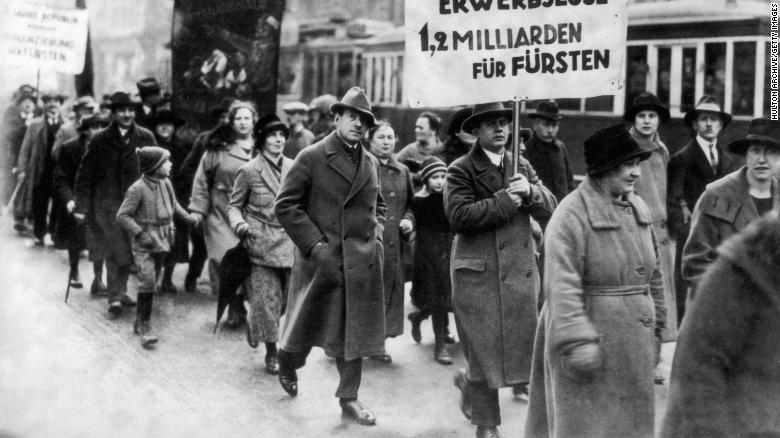
Male and female protesters during a demonstration by unemployed people in Berlin, Germany, in 1930.
Former US Vice President Joe Biden said last week that Trump was (wittingly or otherwise) helping with Putin's agenda, which is above all to break the liberal western order that faced down the Soviet Union and stands for everything the Russian leader despises.
Putin invite sends Washington into Russian twilight zone
But is that order really in danger, and if so what might replace it? Some hark back to the 1930s, when the aftermath of economic crisis, protectionism, hostility to minorities, the collapse of international institutions and a sense that democracy had failed, allowed fascism to take root.
This parallel can be overdone of course: we live in an age of relatively full employment. We appear not to be on the brink of war, with fascist powers re-arming. Paramilitary groups don't stalk the streets, most nation-states are stronger than they were in the 1930s, and the concept of human rights is now entrenched in democratic societies.
But when in doubt, quote Mark Twain, who is reputed to have said that "History doesn't repeat itself but it often rhymes."
And if some echoes of the 1930s are faint today, there are many contemporary trends that are equally alarming.
Trade wars
The most obvious parallel is a resurgent economic nationalism. Trump called the Trans Pacific Partnership a fraud, attacked the North American Free Trade Agreement as the worst deal in American history and imposed tariffs on imports from China, Europe and elsewhere -- with more promised.
He said the US would remain in the World Trade Organization, whose mission is to advance a free and fair trading system, but added: "We've been treated very badly ... It's an unfair situation." WTO Director-General Roberto Azevêdo warned that if the U.S. were to leave the organization, the law of the jungle would prevail.
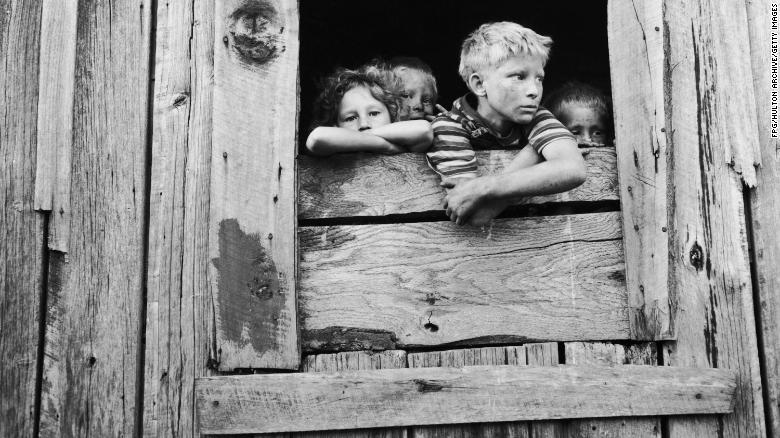
A group of children at the window of a shack in the U.S. in 1939.
It's hardly surprising historians recall the infamous Smoot-Hawley Act of 1930 which imposed steep tariffs on America's trading partners. The arguments of the act's supporters -- that American industry and agriculture needed protection from unfair competition -- are similar to those used by Trump today. In each case, US action prompted retaliatory tariffs.
As yet unknown: whether today's trade wars will have the same disastrous consequences as Smoot-Hawley, which only deepened the Great Depression, or whether at some point, after all the brinkmanship there will be a "deal." It all depends on whom Trump listens to.
Related: Trump's Fast And Loose Trade Policy Endangers American Jobs
In any case, today's interdependent markets and technologies coupled to a global economy in good health (the IMF expects global growth of 3.9% this year and next) are in stark contrast to the rampant unemployment and inflation of the inter-war period. German unemployment stands at 3.4%; in 1932, 30% of the country's workforce was unemployed. The following year, 25% of Americans were out of work. And the working wage then was much closer to the poverty line than now; far fewer people had savings.
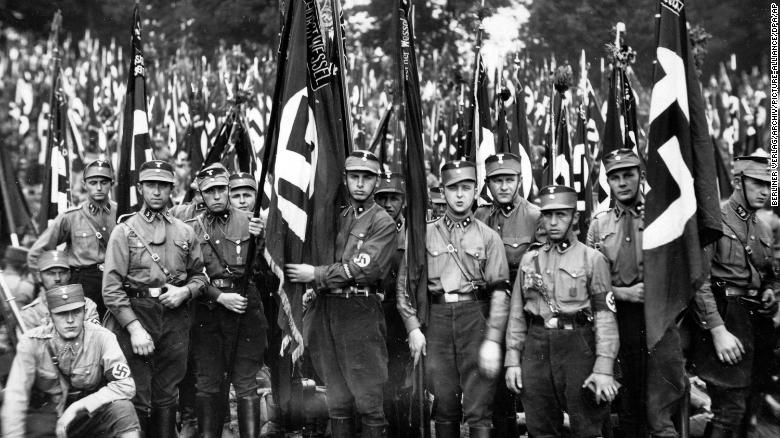
Brownshirts at a rally in Nuremberg, Germany, 1933.
Economic crisis and political disarray fueled the rise of paramilitary groups. Almost every European country had their own versions of the Nazis' Sturmabteilung -- the Brown Shirts -- in the 1930s. It is hard to see how the peripheral fascist groups of today could challenge sophisticated states, even if another Great Recession came calling. All the same, it's little wonder that a fringe of far-right groups feel enabled -- especially with nationalist, anti-EU parties either in power or on the brink of it across Europe.
Amid the confrontations at the "Unite the Right" rally in Charlottesville last year, Trump said there were "fine people" on both sides. Far-right attacks injured 560 migrants in Germany in 2016. The British government's latest counter-terrorism strategy contends that "the threat from the extreme right wing has evolved in recent years and is growing."
News Courtesy: www.cnn.com

